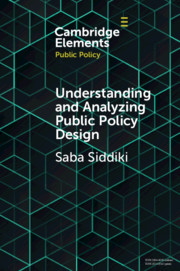Element contents
Understanding and Analyzing Public Policy Design
Published online by Cambridge University Press: 27 June 2020
Summary
- Type
- Element
- Information
- Series: Elements in Public PolicyOnline ISBN: 9781108666985Publisher: Cambridge University PressPrint publication: 23 July 2020

